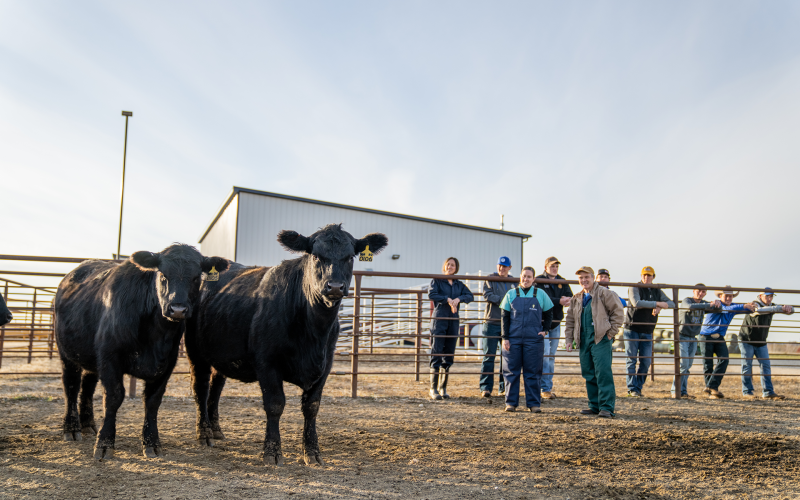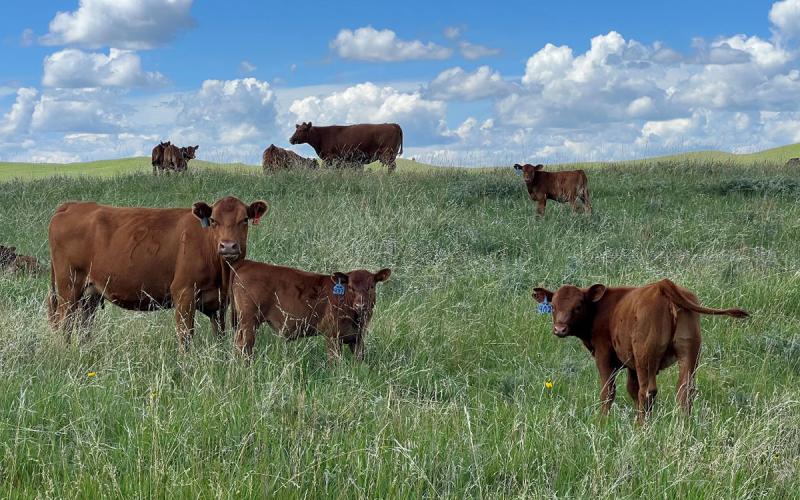Written collaboratively by Jessalyn Bachler, former SDSU Extension Range Field Specialist, and Krista Ehlert, Assistant Professor & SDSU Extension Range Specialist.
With prolonged drought conditions throughout many areas of South Dakota, there is an increase of invasive weeds and poisonous plants on rangelands. Identification of poisonous plants is crucial to ensure livestock production is not compromised. Livestock producers must take caution when grazing pastures that are invaded with poisonous or toxic plants. In this series of articles, poisonous plants found on South Dakota rangelands will be reviewed to assist in proper identification and control.
Poisonous Plants Common to South Dakota
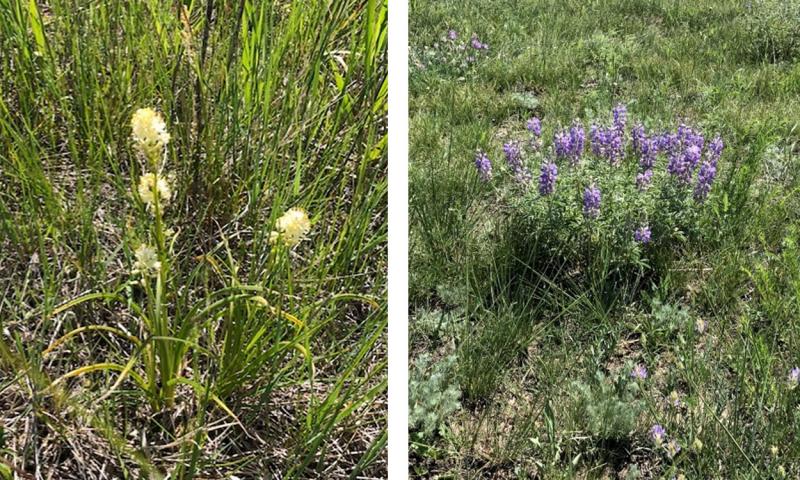
According to the Poisonous Plants Research Center (Logan, Utah) 3–5% of all livestock (cattle, sheep, and horse) deaths are caused by ingestion of poisonous or toxic plants (Panter et al. 2011). Most poisonous plants are deemed acceptable in pastures, as long as palatable forage is readily available for grazing. Compounding factors, such as drought or overgrazing, can heighten the amount of unpalatable or poisonous plants in a pasture. When there is a lack of palatable forage, and numerous poisonous plants are readily accessible to grazing, livestock are encouraged to eat the toxic plants, negatively affecting production.
When livestock graze poisonous plants, toxic compounds, such as alkaloids or excessive concentrations of nutrients like selenium, are released that cause harm to the animal. Some plants only require small amounts of ingestion to be lethal, others need to be consumed heavily for effects to be seen. Reduced fertility and conception rates, lower milking rates and daily gain, birth defects and abortions, photosensitivity and other chronic illnesses can all be caused by toxicities in poisonous plants. The level of toxicity can be influenced by numerous factors, such as: water and forage availability, grazing behaviors affected by stock densities, location of poisonous plants and livestock novelty to plants. Certain species of livestock are more susceptible to be poisoned by specific poisonous plants. Thus, identification of poisonous plants that are common to your area is key to avoiding toxicity problems. In this article, we discuss a few plants to be on the lookout for across South Dakota prairie pastures, with articles forthcoming about other species to be aware of.
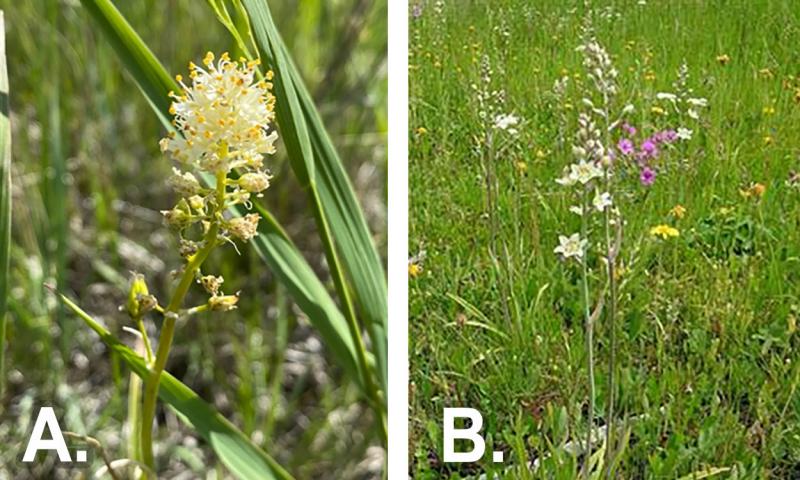
Deathcamas
Two types of deathcamas are found in South Dakota: meadow deathcamas and showy deathcamas. Meadow deathcamas (Figure 1-A) grows from an elongated bulb and has a yellowish-white, cone-like inflorescence with grass-like leaves that create a “V” shape; it is found in the drier, mixed-grass prairies of South Dakota and is especially prevalent in drought years. Showy or mountain deathcamas (Figure 1-B) is taller than meadow deathcamas and has a less-dense and sometimes branched, yellowish-white inflorescence; it is mainly found in moist meadows and grasslands in the northeastern part of the Black Hills.
All parts of the deathcamas plant are extremely toxic to livestock from steroidal alkaloids and cause excessive salvation, labored breathing, staggering, convulsions and eventually death. This plant is especially lethal to sheep, where doses as little as one pound can cause death.
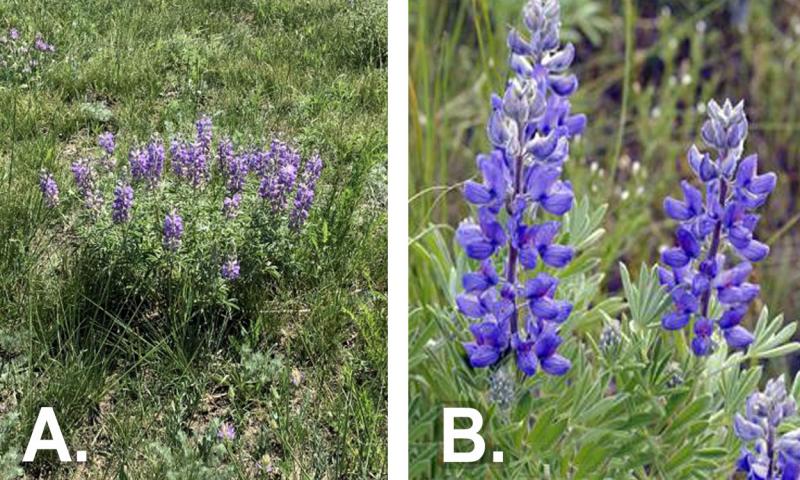
Lupines
Silvery lupine (Figure 2-A) is identified by its hairy, silver-colored, palmate leaves and blueish-purple seed head that appears in June or July. The plant creates pods from June to August that are extremely toxic to livestock due to the high alkaloid compounds. Silky lupine (Figure 2-B) is a lookalike to silvery lupine; it has a more-prominent pubescence on the back side of the banner petal. Both silvery and silky lupines are found throughout western South Dakota and the Black Hills, and both are toxic to livestock. Sheep are especially susceptible to lupine poisoning that can lead to respiratory disease, paralysis and death by eating less than ¼ pound. Cows must intake over one pound of lupine to be poisoned; calves of pregnant cows that eat lupine commonly have skeletal defects, such as crooked legs and cleft palates.

